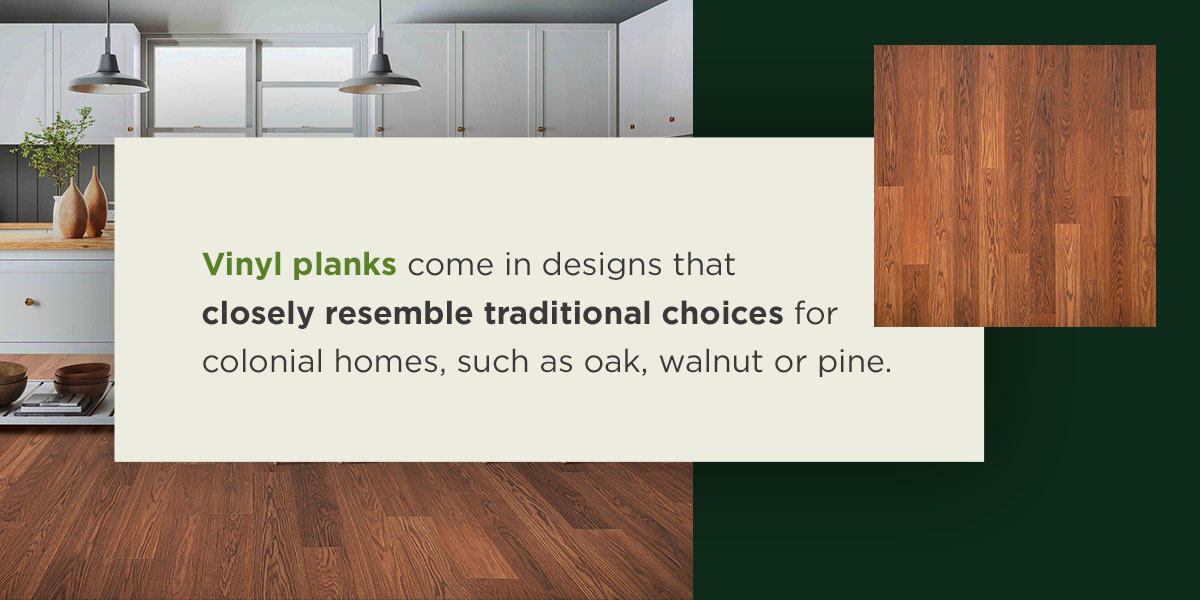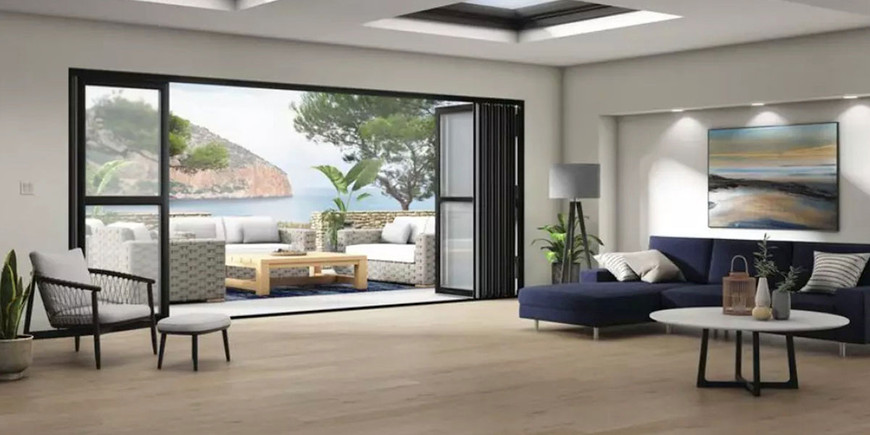Colonial Flooring Style Ideas
Posted by Ben Garelick (@BlueShirtBenny) on 6th Nov 2025
Colonial flooring brings a warm, welcoming feeling, blending historic charm with modern comfort and practicality. It takes inspiration from early American homes — think wide wooden planks, rich colors and natural textures.
Whether you're restoring a historic home or adding traditional charm and lasting quality to a new build, colonial flooring never goes out of style, offering endless ways to create comfort and character.
What Defines the Colonial Flooring Style?
Colonial-style flooring draws inspiration from early American homes built between the 17th and 19th centuries. During this era, builders used local materials, primarily wide-plank hardwoods such as oak, pine or maple, which were durable and readily available. This type of flooring was also popular in Victorian houses. Floors were hand-hewn, finished with natural oils and valued for their simplicity.
Modern interpretations preserve the same spirit but use updated materials for convenience and strength. Today's colonial flooring balances tradition with modern performance, making it ideal for homeowners who want heritage style without high maintenance. Features include:
- Natural tones like honey, chestnut and walnut
- Subtle wood grain or distressed finishes for texture and depth
- Durable materials built for long-lasting wear
- Seamless fit with traditional trim, moldings and furniture
Best Flooring Types for Colonial-Style Homes
Colonial flooring marries design and function. Materials like heart pine, engineered wood and luxury vinyl tile create timeless elegance. Modern versions of colonial flooring are easy to clean and maintain, as engineered hardwood and luxury vinyl planks (LVP) resemble genuine wood while resisting moisture, scratches and everyday wear.
Hardwood
Traditional hardwood flooring emphasizes authentic, solid wood species like oak and similar classics. It is the best flooring for a colonial house, as it complements the period look and offers the capability to evolve with your home. This material is easy to polish or top with a few cozy rugs to add style and warmth to your space.
Solid wood is a durable surface that ages gracefully and delivers the aesthetic continuity that colonial style demands. As it's not susceptible to moisture damage, hardwood is also well-suited for homes in a humid climate. Pair hardwood with traditional trim, wainscoting or colonial-style furniture to complete the look. In dining rooms or entryways, a satin finish enhances the wood's natural glow and complements period details like spindle chairs or antique buffets.
Engineered Wood
Engineered hardwood captures the desirable wood look while offering durability and stability. It features a genuine wood top layer over a sturdy base that prevents warping and makes the material more stable in changing weather conditions. It's practical for use in rooms that experience temperature or humidity fluctuations, such as upper floors or basements.
You can choose from oak, hickory or maple in warm shades that match the classic colonial palette. Use wider planks to emulate the floors found in early American homes. Aesthetically, this look works well in living rooms, dining areas and bedrooms where you want comfort and long-lasting authenticity.
LVT
LVT is an excellent option if you love the wood look but want something easier to care for. It's waterproof,
scratch-resistant and built to handle daily life. These floors are ideal for kitchens, mudrooms and high-traffic
households with pets or kids.
Vinyl planks come in designs that closely resemble traditional choices for colonial homes, such as oak, walnut or pine. They also install quickly, often directly over existing floors. You get the charm of colonial style without worrying about spills or damage. Pair them with antique brass fixtures, woven rugs or colonial-inspired lighting for a design that feels timeless yet functional.

Preserving and Restoring Historic Wood Floors
Historic wood floors tell a home's story, and preserving them keeps that story alive while maintaining the character and value of a colonial-era space. Carefully inspect to identify wear, scratches or finish loss. Avoid using harsh chemicals — instead, gently clean with a damp microfiber mop and pH-neutral wood cleaner that protects the original surface.
When floors appear dull but are still structurally sound, screening and recoating them may be enough. This light sanding process removes surface scratches and lets a fresh topcoat bond without taking off the entire finish. It's ideal when your goal is to refresh the sheen and protect the patina.
If you want to match existing floors in adjoining rooms, look for unfinished planks, matching stains or custom finish options that replicate period tones. With professional guidance and installation services, you can preserve your colonial home's original look while ensuring the floor remains beautiful and functional.
Blending Tradition with Modern Trends
The beauty of colonial style lies in its versatility. You can pair it with antique furniture for a classic look or modern pieces for a contrasting effect. Either way, it keeps your space grounded and inviting.
Start with texture. Floors in colonial times often displayed hand-hewn marks and natural variations. Modern flooring recreates this tactile character through wire-brushed or hand-scraped finishes. These subtle textures add depth, hide daily wear and make a new floor feel lived-in from Day 1.
Earthy shades honor traditional palettes while pairing beautifully with contemporary furnishings and neutral walls. These tones ground open-concept spaces and complement modern paint choices, maintaining their timeless appeal. Artisan finishes bridge old and new. Matte or low-sheen coatings accentuate the wood's natural grain, while updated protective layers provide resilience and ease of care.
Choosing Floors for Your Colonial Home
Creating a colonial-inspired room is all about balance and small details that help your home feel unified, elegant and calm. Here's how to make it work.
- Choose warm tones: Mid-range woods, such as honey oak or chestnut, create the inviting glow of colonial interiors.
- Pick wider planks: Wider planks look authentic and add visual depth to larger spaces.
- Use simple patterns: Colonial style focuses on natural beauty, so avoid overly busy designs.
- Match trims and moldings: Wide baseboards and crown moldings emphasize the traditional look.
- Stay consistent: Flowing the same flooring through multiple rooms gives a cohesive, classic feel.
Transform Your Home with Carpet & Tile Mart
Colonial flooring adds familiar, enduring character to your home. Whether you prefer the authenticity of hardwood, the flexibility of engineered wood or the practicality of luxury vinyl, each option captures the essence of early American design while fitting the pace of modern life.
As a third-generation, family-owned business, Carpet & Tile Mart understands this classic style. Let our experts enhance your existing decor and suggest innovative ways to incorporate colonial flooring ideas into modern homes, creating a comfortable and stylish ambience. We support all manufacturer warranties and guarantees, and our team will gladly correspond with manufacturers if you encounter any issues with your purchase.
Start building your look with our online room visualizer tool or visit one of our 14 physical locations to explore your colonial flooring options.




